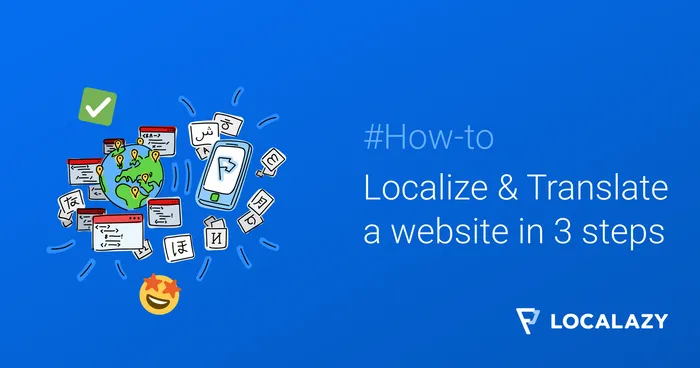Language shapes the way we think, and changes in us - the society - are reflected in changes in language. The language specialists often wonder how to describe gender-inclusive language in practice and in what ways organizations can incorporate gender-inclusive language into their texts.
Generally, we can define gender-sensitive language as a "means of communicating in a way that does not discriminate against a particular gender and does try not to propagate gender stereotypes."
Below, there are some strategies and approaches that can upgrade your communications to be more gender-inclusive.
Please note that applying these best practices in all languages is simply impossible. We are focused here on English (and Polish, because I am a native Polish speaker), as this is the language most often used in IT and translated from. However, the general idea is that strategies described here and others can be used in most. So this text should be treated as a guide rather than a strict set of rules.
1️⃣ Introduce gender-neutral words 🔗
Gender stereotyping can be avoided by discouraging the usage of gender-specific terms or the general use of the word "man."
There might be some alternatives available; for example, in English, you might say "police officer" instead of "policeman" or "policewoman" and "working hours" instead of "man-hours."
In other languages, such as German, you can use a participle instead of a noun to remove the gender bias: "Studierende" instead of "Studenten und Studentinnen."
In Polish forms, "student" (m) and "studentka" (f) can be substituted by "osoby studenckie" (persons who study) as used here: https://bosko.amu.edu.pl/.
What is important, you should note, is that in comparison to English, using gender-neutral words is much more challenging in fusional languages (or "inflected languages") as each word ending in the case of nouns and adjectives bears gender information.
2️⃣ Using plural pronouns 🔗
Use "they" instead of "he or she."
In the past, male pronouns were often used to refer to a person of unknown gender. Later it was replaced by the awkward phrase "he or she."
This form is far from perfect - it still points to two genders, and it is quite long, which is important, especially in the case of UI localizations, where character limitations often occur).
Hence, in some languages, it has been replaced by the plural form “they.”
So instead of writing: "Each administrator must sign his list." OR "Each administrator must sign his/her list." use the form: "Each administrator must sign their list."
This is not a perfect solution, and using this strategy in fusional languages might be tricky:
For example "All programmers must code." in Polish: "Każdy programista musi kodować." (m) OR "Każdy programista/każda programistka musi kodować." (m/f) cannot be substituted with pluralized "Wszyscy programiści muszą kodować." because in Polish plural forms are gender specific as well - "wszyscy programiści" (m) OR "wszystkie programistki" (f).
3️⃣ Skip the gendered pronoun 🔗
In English, sometimes, it is even possible to omit the personal pronoun completely without changing the meaning of the sentence.
The sentence: "We ordered the detective to continue his efforts to find our dog." can be replaced with "We ordered the detective to continue efforts to find our dog."
Surprisingly in some instances, it might work in fusional languages so in Polish, the sentence: "Poprosiliśmy ją o wydanie reszty." (which translates to "We asked her to give us the change.") can be substituted with "Poprosiliśmy o wydanie reszty." ("We asked for the change.")
In English, the gendered pronoun can also be skipped using the -ing form. "The network specialist must solve 1000 issues before they can apply for a PRO badge." can be changed to "The network specialist must solve 1000 issues before applying for a PRO badge."
You can try and apply similar strategies for Polish: "Specjalista sieciowy musi rozwiązać 1000 problemów, zanim będzie mógł ubiegać się o odznakę PRO." can be converted to "Specjaliści sieciowi muszą rozwiązać 1000 problemów, zanim możliwe będzie ubieganie się o odznakę PRO.", however this will not work as neatly as in English.
4️⃣ Address the reader directly 🔗
In a certain context, you can omit the role (user, administrator, client) and compose a string without it.
So instead of writing: "As an administrator, you need to make sure that data is saved at regular intervals." you can write: "Save your data at regular intervals."
This works in Polish equally well: "Jako administrator musisz się upewnić, że dane są zapisywane regularnie." ➡️ "Regularnie zapisuj dane."
This strategy also allows you to create shorter strings, so it is extremely useful and universal.
5️⃣ Use the passive voice 🔗
Passive voice is often a questionable stylistic solution, yet it can serve as a useful alternative to gendered constructions.
Instead of writing: "The project owner must have actionable resources for the task they are presenting." you may write: "The project owner must have actionable resources for the task being presented."
Again - in case of fusional languages this strategy might work quite neatly: "Właściciel projektu musi dysponować użytecznymi zasobami w odniesieniu do zadania, które opisuje." ➡️ "Właściciel projektu musi dysponować użytecznymi zasobami w odniesieniu do opisywanego zadania."
Some information is missing after converting the sentence (both in English and in Polish), but the general meaning is preserved.
🎙️ Inclusive language is only the first step toward clearer, more user-friendly communication. Next comes accessibility. Tune in to our podcast episode with Signapse co-founder, Sally Chalk to listen to insights about AI, sign language, and accessibility
➕ Bonus: Postgender forms / Dukaizmy (in Polish) 🔗
In some limited aspects in Polish, you may consider using postgender forms called Dukaizmy.
These forms were coined by Jacek Dukaj for the purpose of his book “Perfekcyjna niedoskonałość” (Perfect Imperfection.)
In the book, the forms are used by post-human beings (phoebe), whose gender is not stated. The author's surname was used to name these forms „dukaizmy”.
The pronoun is "onu/jenu" and the inflection of nouns, adjectives, and adverbs always changes to -u. Let's convert this "male" sentence into a "dukaizm".
Male: "Myślę, że on jest bardzo miły, przyjacielski i urzekający. Jego wypowiedzi są fascynujące."
Dukaizm: "Myślę, że onu jest bardzo miłu, przyjacielsku i urzekającu. Jenu wypowiedzi są fascynujące."
🏢 Gender-sensitive language in companies 🔗
Apart from writing the text with this guidance in mind, an additional linguistic challenge is that localization specialists, who will translate your documentation and software, will need to consider that not every language can be easily adapted into a gender-sensitive version; some languages will require a lot of creativity to make it work.
Nonetheless, language affects the way we perceive the world, and it shapes our vision, so use it to keep your customers feel welcome, no matter who they are.
The examples above show that gender-sensitive language can help to avoid assumptions about male and female users and also linguistically address people who identify as neither male nor female.
Gender-sensitive language can make textual communication much more inclusive. It is observed that it can sometimes be confusing and may even be met with resistance. Yet, well-written technical documentation and UI are critical to your customers.
✔️ Conclusion 🔗
Usually, in UI strings and software manuals, you want to be as accurate as possible; at the same time, you don't want to exclude any of your customers or users.
Therefore your final goal should be to create texts that are addressed to all of the users of your software and services, and that's why it's a good idea to include a section on gender-sensitive language in linguistic style guides.
📘 Further reading 🔗
Read more articles to help your translators make the localization of your project more effective:




